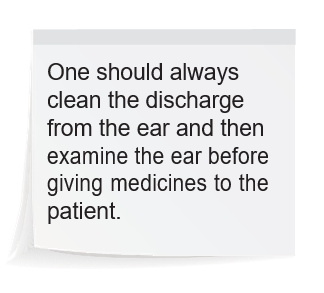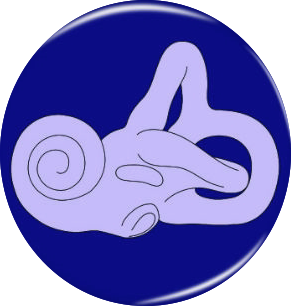Content begins here
Main page content
Click to collapse
 LEARNING OBJECTIVES
LEARNING OBJECTIVES
By the end of this module, the learners should be able to recognise
- common ear complaints and what they could mean
- how to take history in case of ear or hearing problems
- how to examine the ear with use of an otoscope and what to expect when you do so
Hearing assessment is an important part of a complete ear and hearing check-up.
This part is explained in Module 7.
TERMINOLOGY
| –– Bulb –– Batteries –– Dizziness –– Eardrum perforation –– Ear hygiene –– Glue ear –– History –– Itchiness –– Main symptoms of ear disease - hearing loss, otorrhea, otalgia |
–– Otalgia –– Otorrhea –– Otoscope –– Refer –– Speculum –– Tinnitus |
2. HOW TO ASSESS EAR AND HEARING PROBLEMS?
In assessing ear and hearing problems there are three steps.
2.1 WHAT ARE THE SYMPTOMS OF EAR AND HEARING PROBLEMS?
Patients often complain of problems relating to ear and hearing. The most common symptom that you could face in the community are:
|
2.1.1 PAIN IN THE EAR (CALLED OTALGIA) May be acute pain that can be due to
|
2.1.2 EAR DISCHARGE (OR OTORRHEA)
|
|
2.1.3 HEARING LOSS
|
2.1.4 OTHER SYMPTOMS OF THE EAR INCLUDE
|
2.2 EXAMINING FOR SIGNS OF EAR DISEASE
Once the history has been taken, the ear is examined. First examine the pinna. Then look in the ear canal and at the ear drum with an instrument called an otoscope. Examining the ear in this way is called otoscopy. Otoscopy helps to diagnose problems in the ear canal, middle ear and ear drum. Make sure to always examine both ears, even if the patient complain is in one ear only.
2.3 IDENTIFYING HEARING LOSS IN CHILDREN AND ADULTS
After examining the ears, you should check the person’s hearing. There are different ways of doing so depending on the person’s age. Detailed instructions on how to check for hearing are given in module 7.



